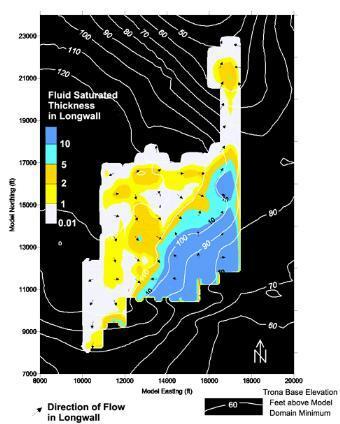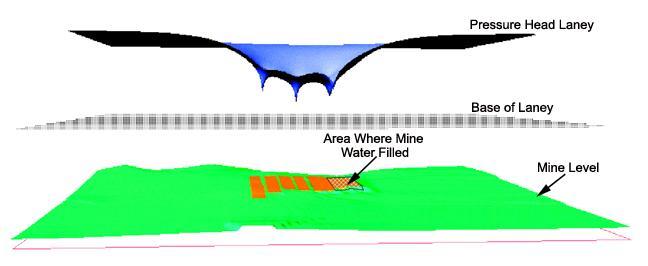
Underground
Trona Mine Dewatering
 Situation
Situation
Hydro Geo Chem evaluated dewatering alternatives for a large,
underground trona mine in Wyoming. Mine operations were impeded
by excessive water flows in the longwall mining area. Hydro Geo
Chem was retained to evaluate the source of the excess water and
to develop alternatives for reducing the flows. Two water-bearing
geologic units were identified as potential contributors to the
excess seepage. One unit was an over-pressured sandstone formation
located about 2,000 feet below the mine level. This unit had the
potential to contribute seepage through floor fractures. The other
unit was a relatively low permeability sandstone located above the
mine level which could become hydraulically connected to the mine
due to extensive fracturing as the longwall area caved.
Hydro
Geo Chem’s Approach
Hydro Geo Chem reanalyzed historical hydraulic testing and
borelog data to estimate the permeability of the potential reservoirs
and intervening geologic units. Environmental tracers were used
to discriminate between the potential sources of seepage. Hydro
Geo Chem developed numerical models to evaluate the effectiveness
of dewatering alternatives including vertical and horizontal depressurization
wells. The models were also used to evaluate future inflows and
to track water flows through the mine to identify areas of water
accumulation.
Results
The overlying, artificially fractured sandstones were identified
as the most likely source of the water flows to the mine based on
the environmental tracers and evaluation of borehole logs. The modeling
showed that depressurization wells were unlikely to significantly
reduce the inflows to the mine because gravity drainage would control
long-term seepage rates. The results of this work prevented the
mine from investing in an expensive dewatering system that would
not have been effective.

